Filipino scientists turn volcanic ash into radiation-resistant building material
2025.02.25
Manila
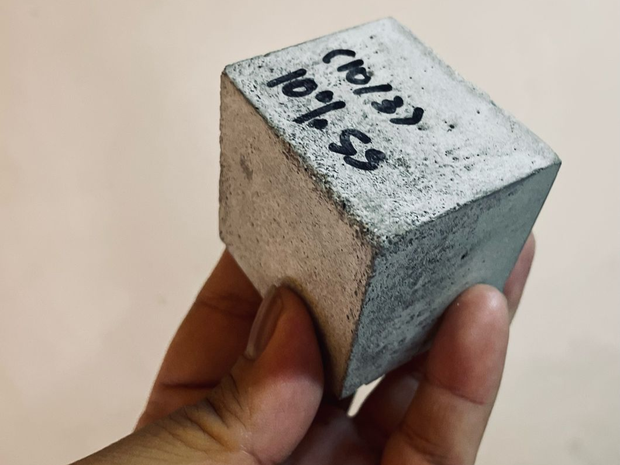 A sample of cement cube made from ash from the Taal volcano is seen in this photo during an interview at the Ateneo de Manila University in Quezon City, Metro Manila, Feb. 19, 2025.
A sample of cement cube made from ash from the Taal volcano is seen in this photo during an interview at the Ateneo de Manila University in Quezon City, Metro Manila, Feb. 19, 2025.
Small cement cubes made of volcanic ash are spread throughout Joel Maquiling’s lab as the Filipino scientist excitedly explains potential practical uses for the concrete material.
Along with two other researchers, Maquiling is spearheading a study on tons of ash expelled by the Taal volcano south of Manila during a huge eruption five years ago that posed challenges on how to dispose of this waste.
Instead of treating the pyroclastic material as mere waste, the scientists have been studying whether volcanic ash could be used in construction applications.
The results, so far, have been astonishing: By mixing the material with cement, the researchers have created construction blocks which, they say, can be used as a shield against harmful radiation.
This material could then be used in hospitals, industrial sites and nuclear facilities. More importantly, it could be an alternative to other more expensive construction materials such as concrete and lead, which can be less friendly to the environment.
“We’re not here just to build materials. It’s not just ‘build, build, build,’” said Maquiling, referring to a much-touted infrastructure initiative of the previous Philippine administration.
“We want it to be ‘build, build, build’ but anchored on good science and engineering,” the scientist, who heads the physics department at the Ateneo de Manila University, told BenarNews.
RELATED STORIES
Philippine Volcano Eruption Forces Schools, Public Offices in Manila to Close
A Close-up Look at Devastation Reaped by Philippine Volcano
Philippines: Volcanic Eruption Forces Thousands to Evacuate
He and his team set out to develop “geopolymers,” or rare geomaterials from waste products of natural cataclysmic events, such as volcanic eruptions.
The January 2020 eruption of Taal volcano, located about 64 kilometers (40 miles) from Manila, provided Maquiling with a challenge of what to do with the tons of waste it had emitted.
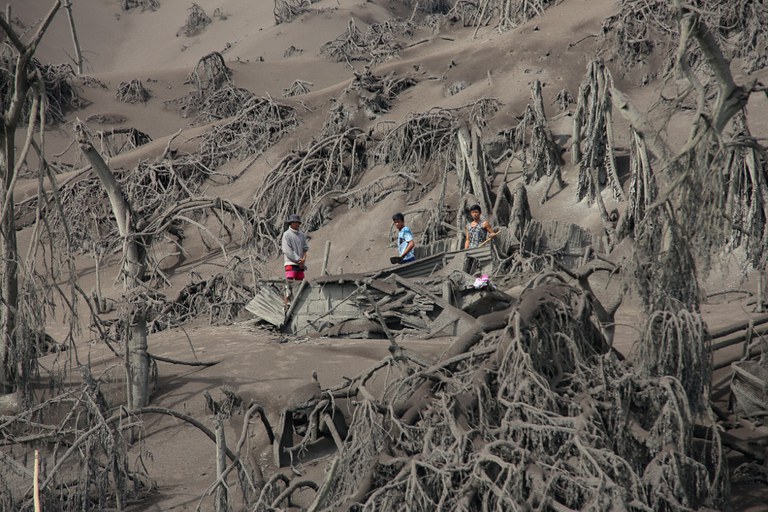
In the wake of the eruption, reporters and photographers from BenarNews traveled to the disaster site. Their cameras captured apocalyptic scenes of devastation, including one picture of a slope of the volcano buried in ash.
“One thing that we wanted to do was to create materials which have greater compressive strength, that could withstand greater pressure, greater forces,” Maquiling told BenarNews
Maquiling said his team also experimented with whether mixing the concrete with other materials would change its properties.
“For example, what if they could shield you from a natural or cataclysmic radiation meltdown, or something like a nuclear event? The next question is, what if there are other properties from that strong infrastructure material that would protect us from nuclear warfare, for example, a nuclear meltdown, or radiation exposure? And that’s what we found in this,” he said.
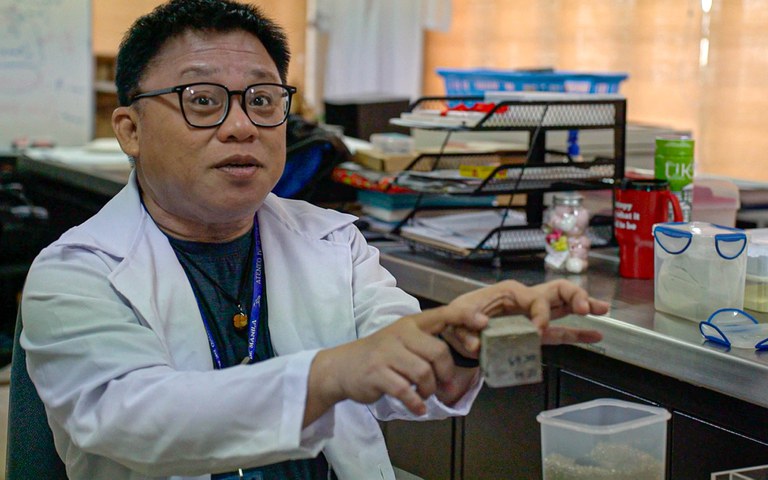
They discovered that combining volcanic ash from Taal with other aggregates created a concrete material that is stronger and has enhanced “shielding capacity” for radiation.
Practical applications include using the material in hospitals and research institutes, Maquiling said. Or in the future, it can be used as materials for buildings or houses in a disaster-prone country such as the Philippines, he also said.
A news release earlier this month from Ateneo University also highlighted the material’s possible benefits.
“Radiation shielding is essential for hospitals, industrial sites, and nuclear facilities. These places use ionizing radiation for beneficial purposes such as in helping doctors treat sick organs and broken bones; looking for structural weaknesses in buildings; or helping sterilize food for longer shelf life,” it said.
“Though useful, exposure to ionizing radiation can be harmful for prolonged periods – hence the need for shielding. However, currently available materials like concrete and lead can be expensive and environmentally hazardous. Construction materials made from volcanic ash offer a [potentially] sustainable and lightweight alternative,” it also said.
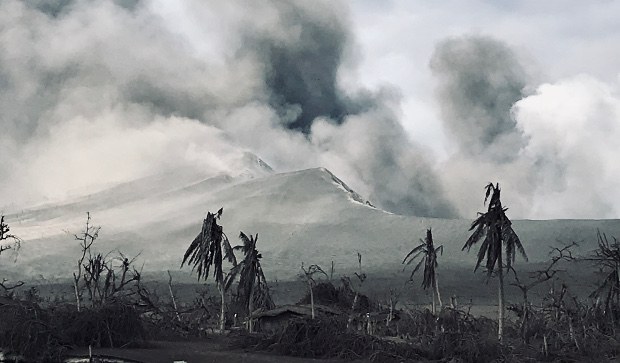
While Maquiling admits that completing the research for this is still far off, the initial results of their groundbreaking study are promising, said the scientist, who also heads the geodynamics and research laboratory at the Manila Observatory hosted by Ateneo.
His laboratory is also collecting ash from other volcanoes that dot the Philippines, which sits on the so-called Pacific Rim of Fire, where volcanic eruptions and earthquakes are frequent due to shifting tectonic plates in the ocean’s basin.
There are 24 active volcanoes in the Philippines, including Taal. When Taal erupted without warning in January 2020, the eruption caught disaster experts by surprise, shutting down Manila’s airports and causing mass evacuations.
A year later, the volcano spewed ash and debris a kilometer into the sky, darkening the skies above nearby areas such as Manila.
The 1,020-foot (311-meter) Taal, located on an island inside a lake, is also regarded as one of the most dangerous volcanoes in the world. An eruption in 1754 was said to have lasted seven months, experts said.
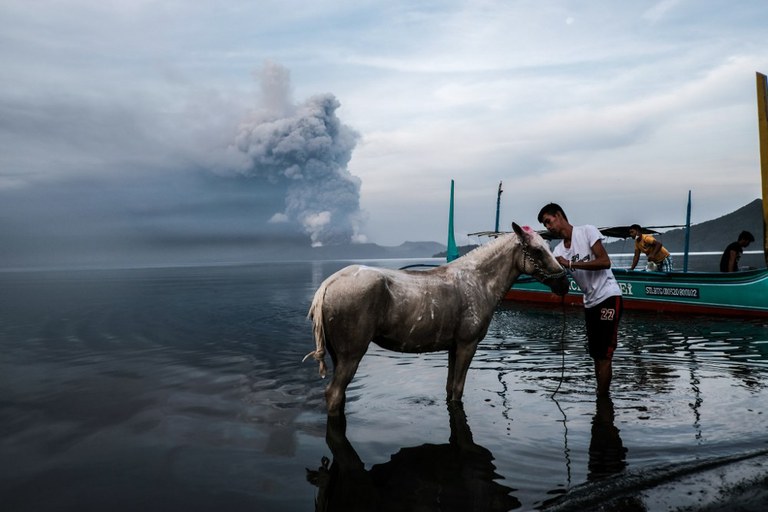
Since volcanic materials are abundant in the Philippines, the discovery of Maquiling’s team can offer a practical way to manage disaster waste while also enhancing safety in critical areas, although he said further studies were still needed.
The breakthrough only shows that while cataclysmic events of biblical proportions cannot be avoided, life-saving innovations can be derived from them, Maquiling said.
“What is important is that there are many waste materials we can use in our composites, to make sturdier materials that can withstand whatever strength in space and time, and it saves us a lot of resources,” Maquiling said. “And all of these things become waste materials in our environment.”
“Why don’t we use these waste materials that were created anyway as by-products of our human activities to be able to come up with sturdier materials that can be useful in infrastructure, that can protect us from radiation and at the same time enhance our well-being.”







